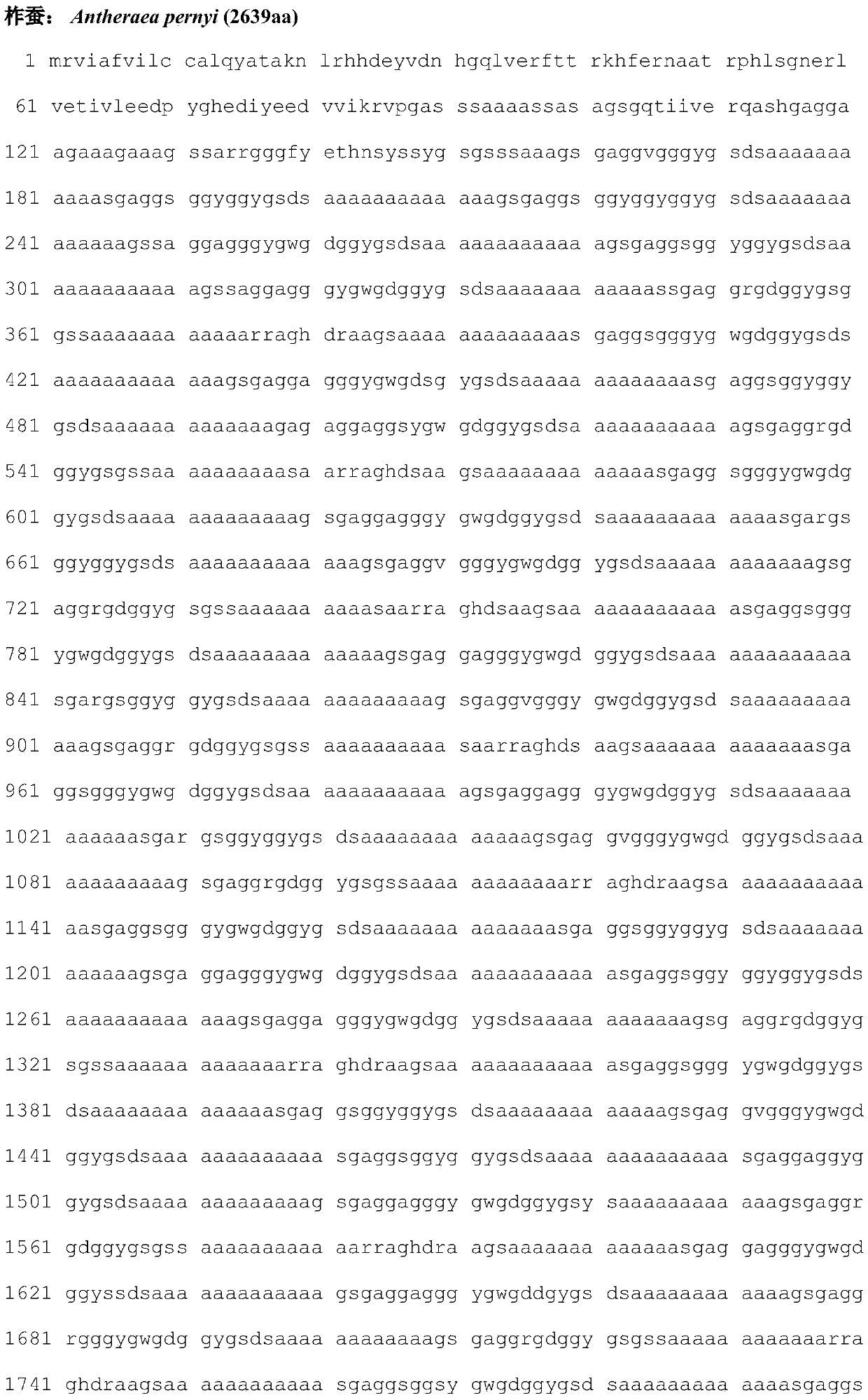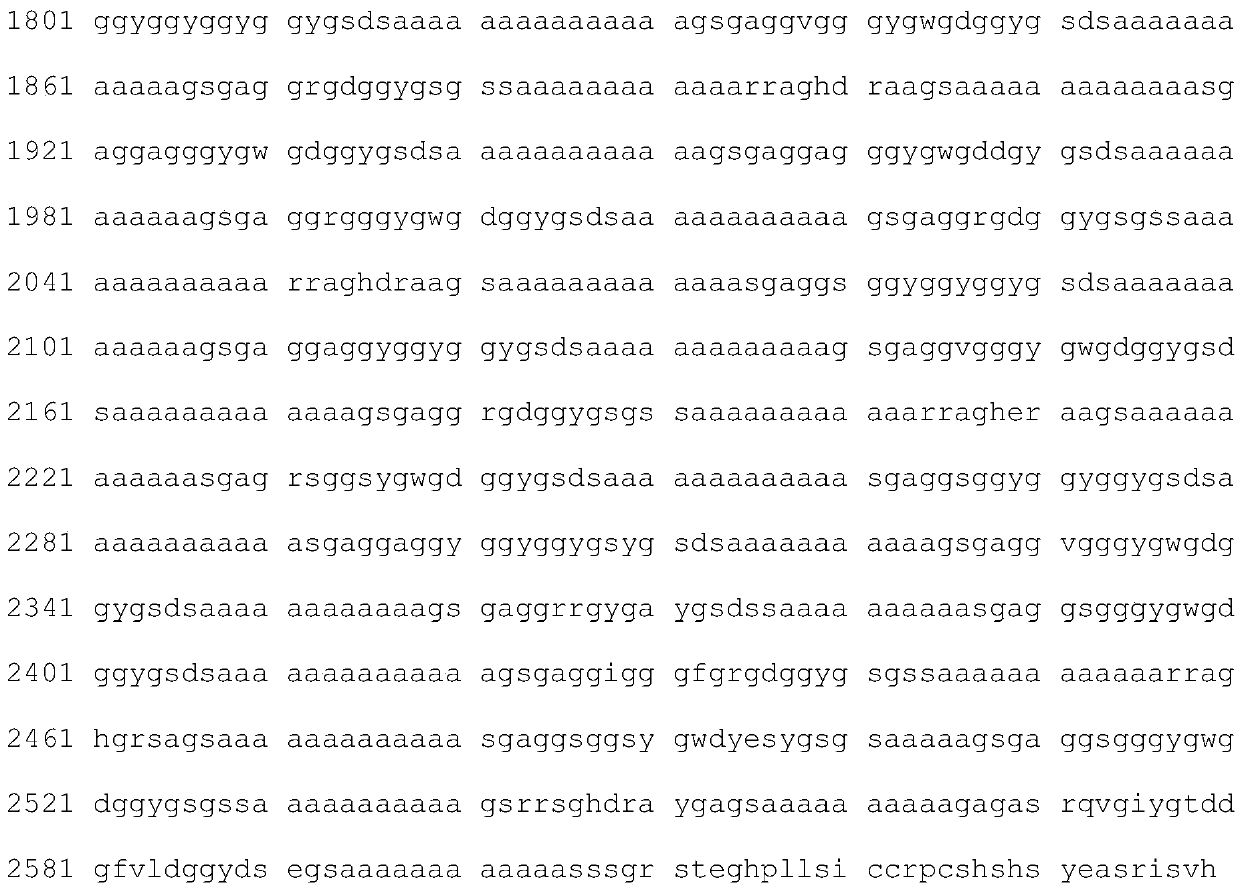Method for using characteristic decapeptidefor preparing tussah fibroin protein antibody
A tussah silk fibroin protein and antibody technology, applied in peptide preparation methods, chemical instruments and methods, from serum immunoglobulin, etc., can solve silk protein degradation, macromolecular chain breaks, and the difficulty of detecting silk fibroin, etc. problem, to achieve the effects of short immunization cycle, high sensitivity, and less antigen dosage
- Summary
- Abstract
- Description
- Claims
- Application Information
AI Technical Summary
Problems solved by technology
Method used
Image
Examples
Embodiment 1
[0029] A method for preparing an tussah silk fibroin antibody using a characteristic polypeptide, comprising the following steps:
[0030] Complete Antigen Synthesis:
[0031] Step 1: use the Fmoc method to synthesize a hapten (that is, the "CAAAAAAAAAAA" polypeptide sequence), and add cysteine to the N-terminal of the "CAAAAAAAAAAA" polypeptide sequence to couple the polypeptide to keyhole limpet hemocyanin (KLH). Through the action of the cross-linking agent, the sulfhydryl group on the cysteine at the N-terminal of "CAAAAAAAAAAA" forms a covalent bond with the primary amine of KLH, thereby coupling the polypeptide and KLH to obtain a complete antigen.
[0032] Step 2: Dilute the complete antigen with physiological saline to 2 times the final concentration, and evenly mix the diluted complete antigen with QuickAntibody-Rabbit5W adjuvant at a volume ratio of 1:1 to obtain the reagent for the initial immunization. The reagents used in the booster immunization were the sam...
Embodiment 2
[0043] A method for preparing an tussah silk fibroin antibody using a characteristic polypeptide, comprising the following steps:
[0044] Complete Antigen Synthesis:
[0045] Step 1: use the Fmoc method to synthesize a hapten (that is, the "CAAAAAAAAAAA" polypeptide sequence), and add cysteine to the N-terminal of the "CAAAAAAAAAAA" polypeptide sequence to couple the polypeptide to keyhole limpet hemocyanin (KLH). Through the action of the cross-linking agent, the sulfhydryl group on the cysteine at the N-terminal of "CAAAAAAAAAAA" forms a covalent bond with the primary amine of KLH, thereby coupling the polypeptide and KLH to obtain a complete antigen.
[0046] Step 2: Dilute the complete antigen with physiological saline to 2 times the final concentration, and evenly mix the diluted complete antigen with QuickAntibody-Rabbit5W adjuvant at a volume ratio of 1:1 to obtain the reagent for the initial immunization. The reagents used in the booster immunization were the sam...
PUM
 Login to View More
Login to View More Abstract
Description
Claims
Application Information
 Login to View More
Login to View More - R&D
- Intellectual Property
- Life Sciences
- Materials
- Tech Scout
- Unparalleled Data Quality
- Higher Quality Content
- 60% Fewer Hallucinations
Browse by: Latest US Patents, China's latest patents, Technical Efficacy Thesaurus, Application Domain, Technology Topic, Popular Technical Reports.
© 2025 PatSnap. All rights reserved.Legal|Privacy policy|Modern Slavery Act Transparency Statement|Sitemap|About US| Contact US: help@patsnap.com


